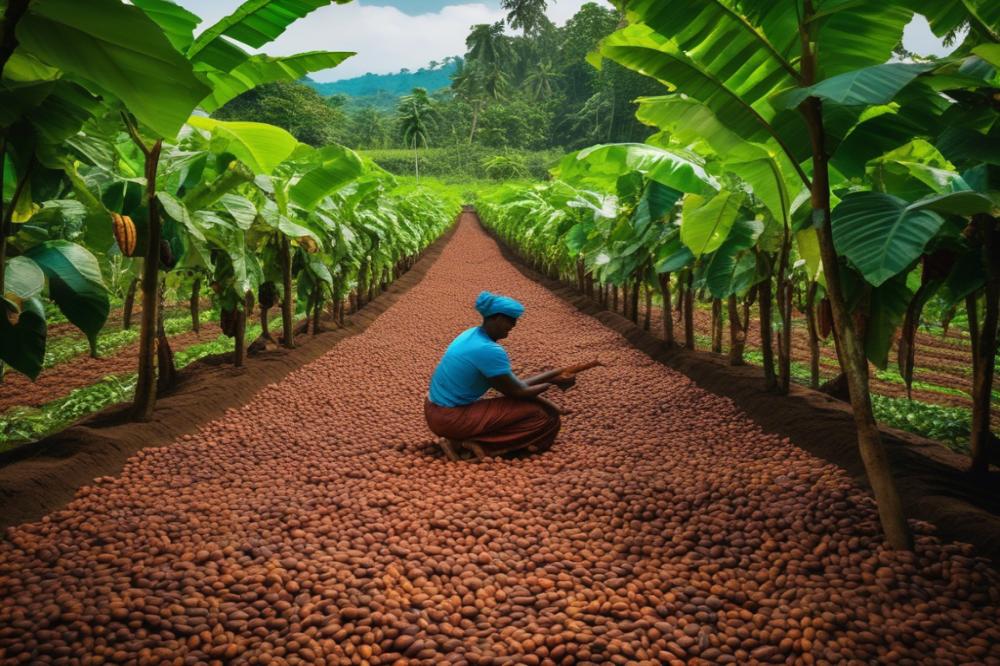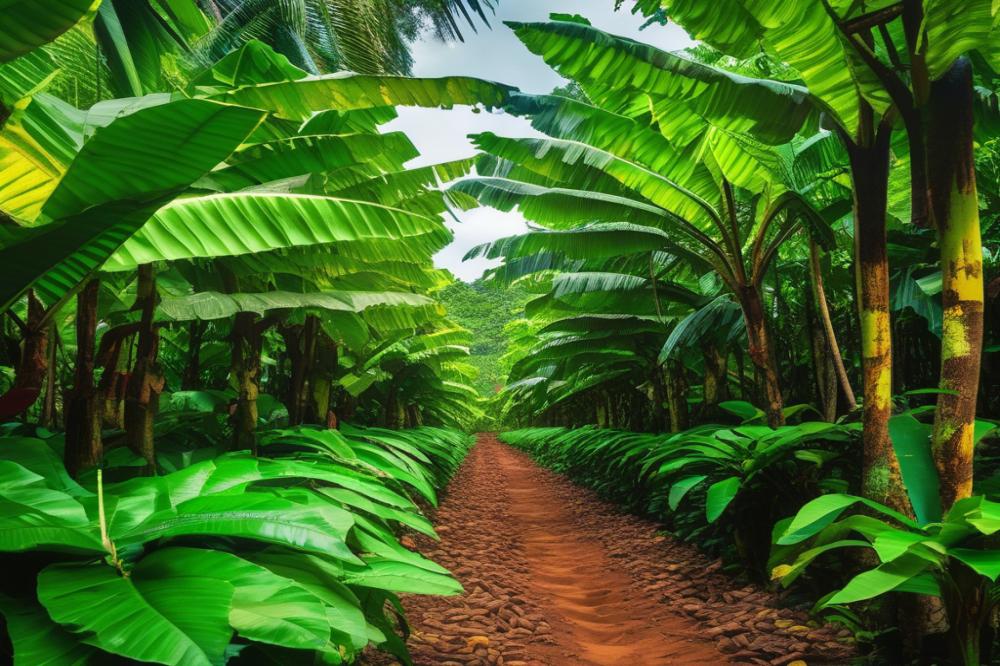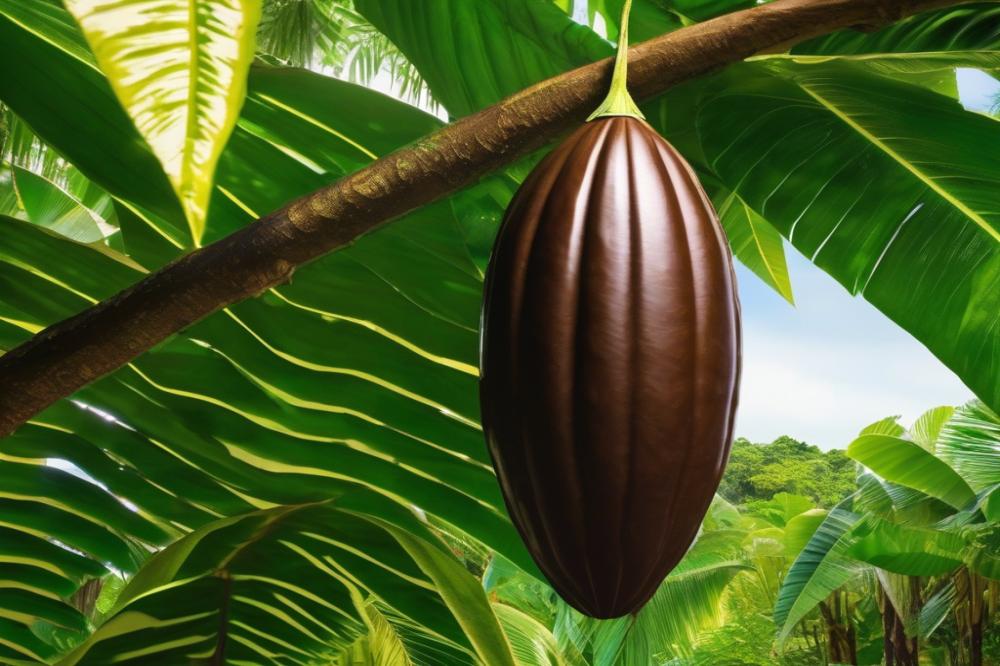Overview of the Global Cocoa Industry
The global cocoa industry serves as the backbone of the chocolatebix.com/exploring-unique-cocoa-products-beyond-chocolate“>chocolate market, which is cherished around the world. This sector revolves around the cultivation of cocoa beans, the seeds of the cacao tree. These beans are essential in making chocolate, one of the most popular and beloved treats worldwide. Understanding how Cocoa Production works helps to appreciate the intricacies of this remarkable business.
Cocoa is not just any commodity; it contributes significantly to many economies. Major producers of cocoa include countries in West Africa, such as Ivory Coast and Ghana. These nations are vital because they supply a large percentage of the world’s cocoa beans. The economic impact of Cocoa Production extends beyond farming, influencing trade, employment, and livelihoods.
Global trade dynamics also play a crucial role. The exchange of cocoa beans through import and export drives the market forward. Major chocolate manufacturers rely heavily on the consistent supply of quality cocoa to meet consumer demand. Sustainability has become a hot topic in recent years. Many producers and chocolate companies are now prioritizing sustainable practices to protect the environment and support farmers.
In the end, the cocoa industry is more than just a source of delicious chocolate. It is a significant player in the global economy and affects lives daily. Understanding these facets enriches our perspective on this beloved industry and the complex systems behind it. The significance of Cocoa Markets continues to expand as we face new challenges and opportunities in our interconnected world.
Cocoa Production
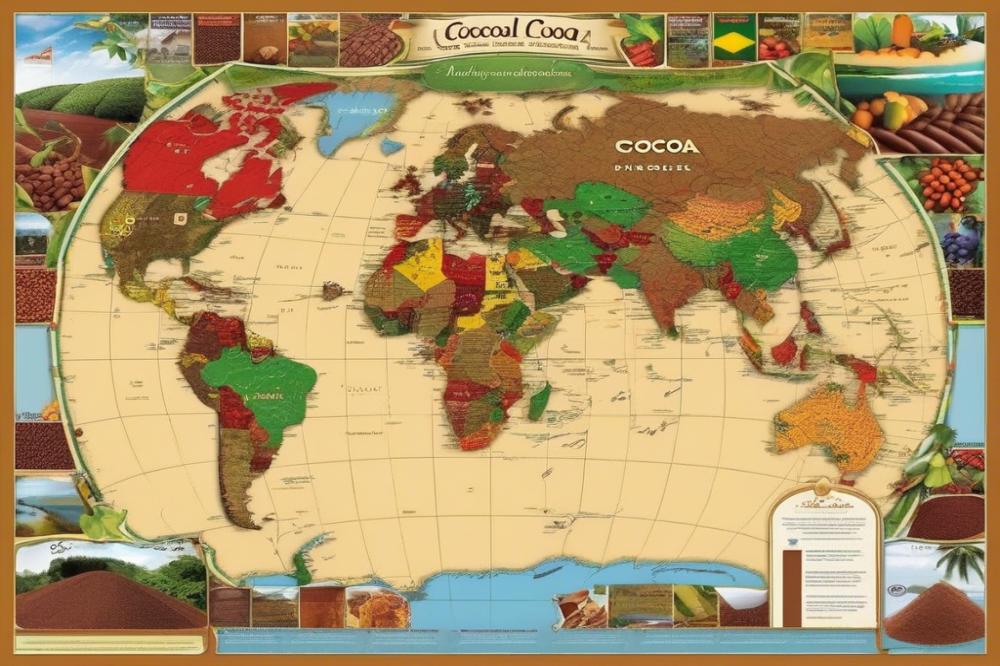
Cocoa refers to the seeds extracted from cacao pods. These seeds, known as cocoa beans, are the foundation of chocolate. Chocolate is a beloved treat enjoyed worldwide. The demand for chocolate continues to rise, which influences cocoa production globally.
Definition and Growth of Cocoa Beans
To produce cocoa beans, farmers grow cacao trees, which thrive in humid, tropical climates. Cacao trees typically grow between 15 to 25 feet tall. These trees begin to bear fruit when they are about five years old. Each pod can hold roughly 30 to 50 cocoa beans. The journey from tree to chocolate starts with careful cultivation of these unique trees.
Cacao Tree Cultivation and Harvesting Processes
Farmers select fertile soil in moist, warm regions to cultivate cacao. Regular maintenance is vital for the trees’ growth. Pests and diseases can threaten cacao trees, making sustainable practices essential for the industry. During the harvest season, ripe cacao pods are carefully cut from the trees. Workers then extract the beans and ferment them for several days. This process develops the flavor profile we associate with chocolate. After fermentation, beans are dried before being sent to markets.
Key Geographical Regions for Cocoa Production
West Africa stands out as a major producer of cocoa beans. Countries like Ivory Coast and Ghana dominate the global market. These nations account for more than half of the world’s cocoa output. Other notable regions include parts of South America and Southeast Asia. Peru and Ecuador also contribute to the global trade in cocoa. Climate and geography greatly influence where cacao trees can flourish.
The economic impact of cocoa production is significant. Many rural communities depend on the cacao industry for their livelihoods. The chocolate industry creates demand for cocoa, leading to export opportunities. However, challenges such as sustainability and fair labor practices must be addressed. Consumers increasingly care about the origins of their chocolate, urging producers to adopt sustainable practices.
Major Producers of Cocoa
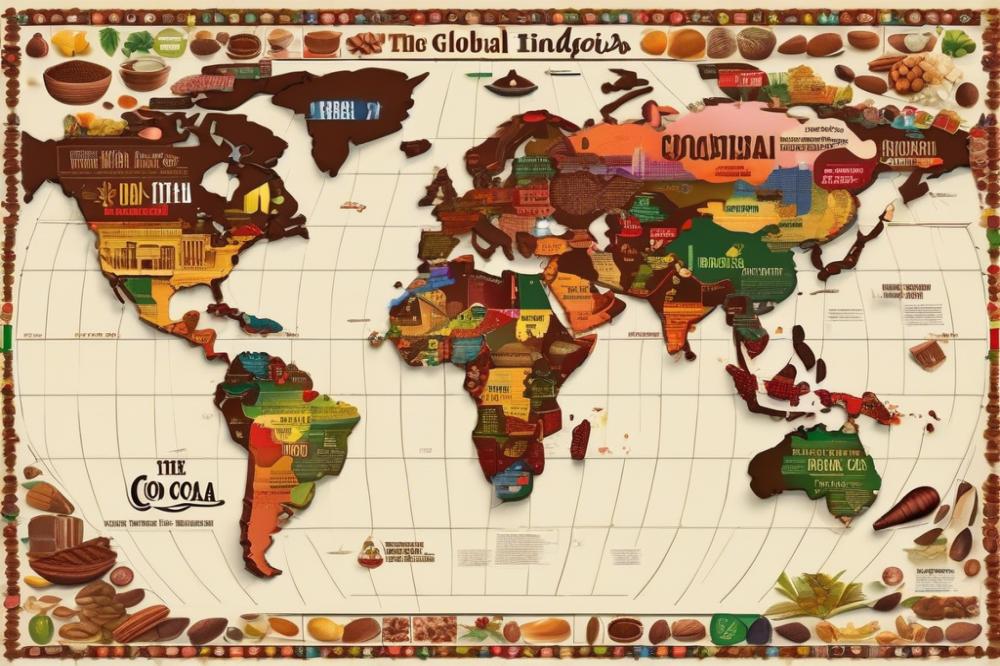
West Africa dominates the cocoa market. Countries like Côte d’Ivoire and Ghana stand out as the top producers. Together, they account for over 60% of the world’s cocoa beans. The region’s climate and soil are perfect for growing the cacao tree, which thrives in the humid weather.
Exporting cocoa significantly impacts these countries’ economies. Farmers in West Africa rely on the chocolate industry for income. Thus, the economic impact goes beyond just selling beans. Jobs are created, and communities often depend on this vital crop.
Other nations also contribute to global cocoa production. Ecuador is renowned for its fine flavor cocoa beans. This South American country caters to high-end chocolate makers. Additionally, Brazil and Indonesia play roles in providing cocoa. They may not lead in quantity, but their quality is noteworthy.
In today’s global trade, sustainability is becoming crucial. Consumers are increasingly concerned about where their chocolate comes from. They demand ethically sourced cocoa that supports farmer livelihoods. This focus on sustainability drives changes in production practices.
Investments in cocoa farming seek to improve yields while protecting the environment. Innovative farming techniques help in addressing climate change. Supporting farmers with better tools ensures that the supply chain remains strong. As cocoa is essential for making chocolate, safeguarding this industry is important for all.
Cocoa Trade: Import and Export Dynamics
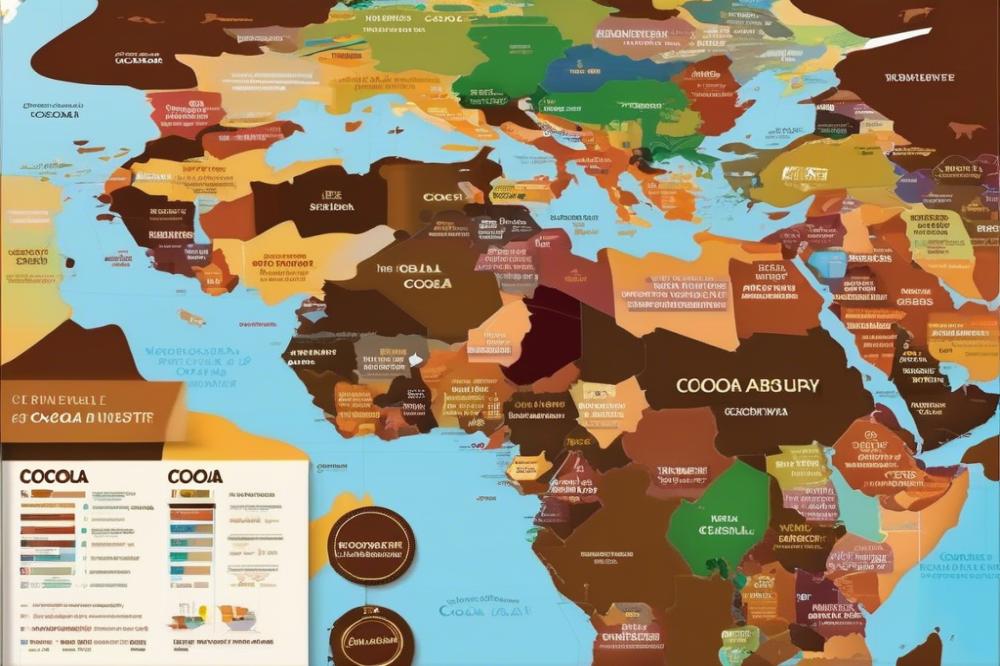
The global trade of cocoa beans and chocolate products is a vast network connecting major producers with consumers worldwide. Cocoa beans are primarily sourced from West Africa, where countries like Côte d’Ivoire and Ghana dominate production. The cacao tree thrives in humid, tropical climates. This region supplies a significant portion of the world’s cocoa, influencing global trade flows.
Chocolate products are highly sought after in many countries. The United States and Europe stand out as major importing nations. In America, the chocolate industry continues to grow each year. Consumers demand a variety of chocolate types, from milk to dark. In Europe, especially in Switzerland and Germany, premium chocolate has a strong market presence. These trends shape how cocoa gets traded internationally.
Major Importing Countries and Their Market Trends
Shifting consumer preferences impact cocoa imports. Health trends have led to an increase in demand for dark chocolate, which contains higher cocoa content. Moreover, ethical sourcing has gained attention. Buyers now prefer products that support sustainability efforts. In 2022, the demand for organic and fair-trade chocolate saw a notable rise in both the U.S. and Europe.
Japan and China are emerging markets for cocoa. Increasing interest in Western-style confectionery drives imports in these regions. As wealth grows, more consumers want premium chocolate treats. This trend highlights the evolving nature of global cocoa trade.
Impact of Tariffs and Trade Agreements on Cocoa Markets
Tariffs play a crucial role in the cocoa trade. Changes in import duties can affect pricing globally. Producers must navigate these barriers each time they trade. Trade agreements also influence how countries interact economically. Favorable agreements can lower costs for importing chocolate products. This situation encourages international partnerships and market expansions.
Additionally, fluctuations in currency exchange rates can create challenges. For example, a weaker currency can make imports more expensive. This scenario impacts consumers, as they may face higher prices for chocolate. Economic factors remain central to understanding cocoa markets.
Overall, the dynamics of cocoa trade reveal much about our global economy. As consumers become more aware of sustainability, changes in their buying patterns reshape the cocoa landscape. Examining these trends provides valuable insights for stakeholders in the chocolate industry.
Sustainability in Cocoa Production
Environmental and Social Concerns in Cocoa Farming
Cocoa farming faces significant challenges. The cacao tree, essential for making chocolate, grows in tropical climates. Many major producers, especially in West Africa, struggle with issues like deforestation and soil depletion. These environmental problems threaten biodiversity. Children often work on cocoa farms under harsh conditions. It’s a heartbreaking reality that should concern us all. The focus on profit can overshadow the need for ethical practices. Farmers typically receive low wages, which affects their families. The social impact of this industry runs deep. Communities suffer from these ongoing challenges.
Sustainable Practices and Certifications in the Industry
Sustainable practices offer hope for better outcomes. They help protect the environment while supporting farmers. Certifications like Fair Trade and Rainforest Alliance promote responsible farming. These labels indicate that producers follow specific guidelines. Such methods can include organic farming, which avoids harmful chemicals. Implementing agroforestry systems also helps restore ecosystems. Using shade-grown cocoa can maintain biodiversity and improve soil health. A commitment to sustainability can encourage consumers to make better choices. When we choose ethically sourced chocolate, we send a message.
Initiatives to Promote Fair Trade and Improve Farmer Livelihoods
Several initiatives aim to uplift cocoa farmers. Fair Trade has gained popularity among consumers. It promotes fair wages and better working conditions. This can lead to economic growth in communities reliant on cocoa beans. Organizations also provide training on modern agricultural methods. Improving farmer education is vital for long-term success. Support for cooperatives allows farmers to unite and strengthen their bargaining power. This collective effort can lead to higher prices for their products. The global trade of cocoa can thus become more equitable. By choosing fair trade options, we can support positive change. Every purchase of chocolate can help build a better future.
Economic Impact of the Cocoa Industry
Contribution to the Economies of Producing Countries
The cocoa industry plays a crucial role in the economies of several nations. Countries like Côte d’Ivoire and Ghana are among the major producers of cocoa beans. Their economies depend heavily on the export of these beans. The revenue generated from cocoa contributes significantly to national income. It aids in funding essential services such as education and healthcare. In many rural areas, the cocoa sector often remains the main source of income.
Job Creation and Community Development Linked to Cocoa
Job opportunities arise at every stage of production. Farmers plant cacao trees, cultivate them, and eventually harvest the beans. This process creates jobs not only for workers on farms but also for those involved in processing and distribution. Communities experience development linked to the cocoa supply chain. Schools and healthcare facilities often improve because of the income generated from chocolate sales. Organizations are also increasingly focusing on sustainability efforts. These initiatives aim to support both the environment and local farmers.
Influence of the Chocolate Industry on Global Markets
The chocolate industry drives demand for cocoa and shapes global markets. Chocolates made from high-quality cocoa beans attract consumers worldwide. Import/export dynamics change based on market trends and consumer tastes. Fluctuations in cocoa prices can impact economies, especially in West Africa. As consumers ask for ethical and sustainable products, producers are forced to adapt. This shift affects the global trade of cocoa, creating new opportunities and challenges. The relationship between chocolate lovers and cocoa producers remains complex but vital.
Final Thoughts on the Cocoa Industry
The cocoa industry holds a vital place in the global economy and culture. This sector not only contributes significantly to the livelihoods of millions but also plays a crucial role in the beloved chocolate market. As we reflect on the factors that shape this industry, it becomes evident that the importance of sustainable practices can’t be overstated.
Looking forward, several trends and challenges are set to impact cocoa production. Climate change poses a significant risk to places that grow cocoa beans. Farmers may need to adapt to new growing conditions, which can be difficult. Innovations in agricultural technology could provide alternative solutions, helping cultivators increase their output. However, these developments also require investments and training that may not be readily available.
Another challenge relates to ethical sourcing. Consumers are increasingly aware of where their chocolate comes from. This trend makes it necessary for companies to commit to transparency and fair trade practices. It is essential for brands to prioritize ethical standards to build trust with their customers. By focusing on sustainability, they can also protect the resources needed for future generations.
In summary, the cocoa industry is not just about delicious treats. It represents a complex network of economic, social, and environmental factors. Ensuring long-term viability in this field requires a comprehensive approach to sustainability. While challenges abound, the potential for positive change exists. The future may hold many possibilities, provided the industry embraces its responsibility towards farmers, consumers, and the planet.

